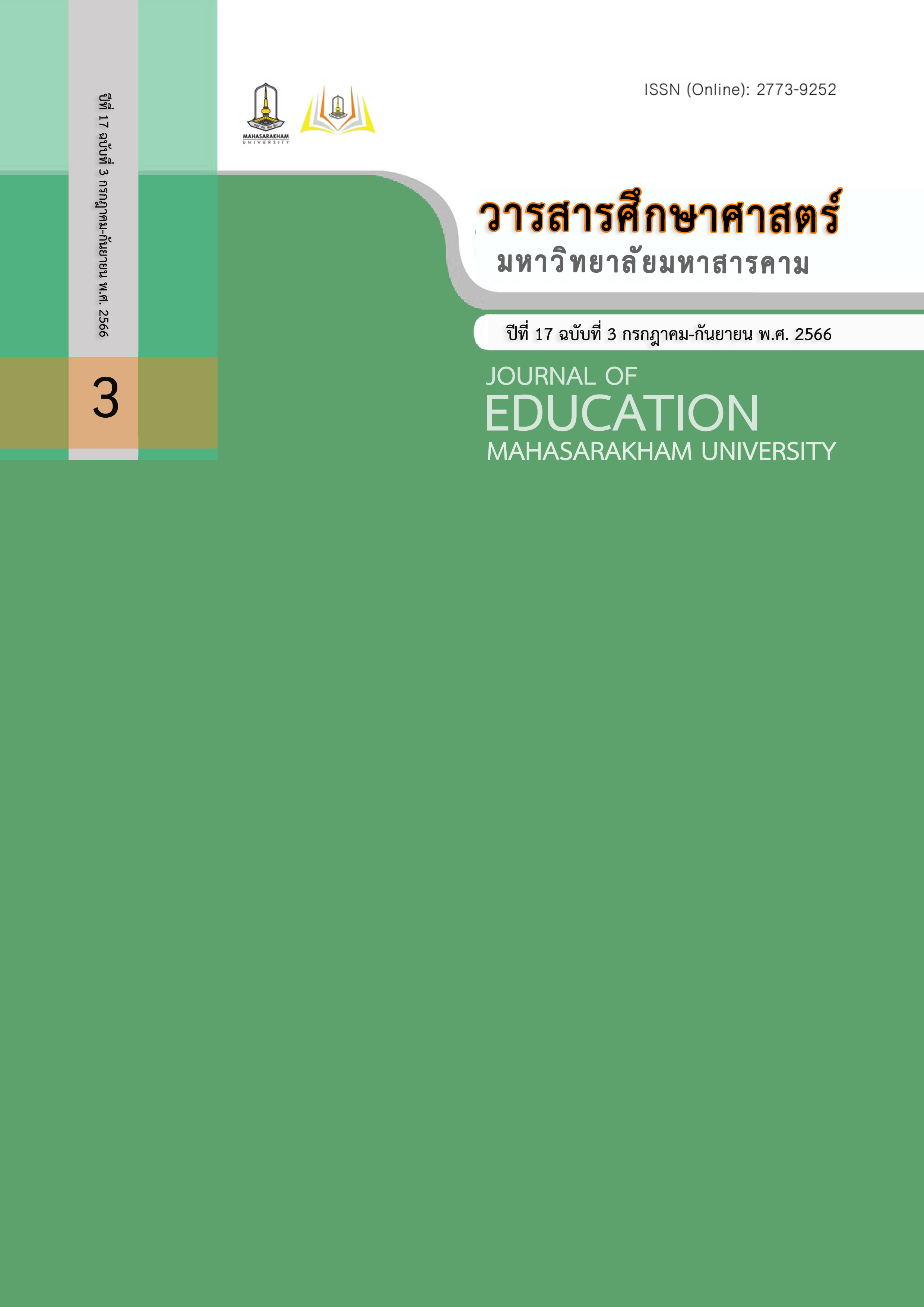Knowledge Extraction of Thai Children Development Program Using Developmental Surveillance and Promotion and the Executive Functions
Main Article Content
Abstract
The purpose of this research is to 1) extract the assessment data from the Developmental Surveillance and Promotion Manual (DSPM) that contributes to the development and training of Executive Function (EF) skills, 2) create indicators of Thai children's development by extracting knowledge from EF construction and 3) integrate knowledge extracted from the DSPM and the EF development indicator to provide data that can be applied in the future using qualitative research and presenting the extracted knowledge to 30 experts to certify the effectiveness and quality of the data. This research used descriptive qualitative to interpret the data. The data was analyzed by using the description of a certain phenomenon and the research findings were summarized as follows: 1) Regarding the extracts from the DSPM that contributed to the development and training of EF skills, the experts agreed that issues with gender should be ruled out 1 item. There were 27 items in total 2) concerning creative indicators, the developmental indicator of cognitive skills were at a high level, and all skill groupings had high levels of quality and precision. 3) In the presentation and assurance of the quality of the data extraction, the opinions of the experts were quite similar, that is the extracted knowledge has acceptable and effective qualities, which can be further developed as a body of knowledge in the development of tools to identify and promote quality child development.
Downloads
Article Details

This work is licensed under a Creative Commons Attribution-NonCommercial-NoDerivatives 4.0 International License.
References
Adlof, S. M., & Hogan, T. P. (2018). Understanding dyslexia in the context of developmental language disorders. Language, speech, and hearing services in schools, 49(4), 762-773. [DOI:10.1044/2018_LSHSS-DYSLC-18-0049].
Akyurek, G., & Bumin, G. (2019). An investigation of executive function in children with dyslexia. Psychiatry and Behavioral Sciences, 9(1-2), 10-17.
Allen LR, Kelly BB, editors. (2015). Transforming the Workforce for Children Birth Through Age: A Unifying Foundation. National Academies Press (US). Retrieved from https://www.ncbi.nlm.nih.gov/books/NBK310536/.
Finegood, E.D., Blair, C. (2017). Poverty, Parent Stress, and Emerging Executive Functions in Young Children. In: Deater-Deckard, K., Panneton, R. (eds) Parental Stress and Early Child Develฟopment. Springer, Cham. Retrieved from https://doi.org/10.1007/978-3-319-55376-4_8.
Hoskyn, M., Iarocci, G., & Young, A. R. (2017). Executive functions in children's everyday lives: A handbook for professionals in applied psychology. Oxford University Press. [DOI:10.1093/acprof:oso/9780199980864.001.0001]
Kanchana, S.; Kotchabhakdi, N.; Sirithongthaworn, S.; Isaranarug, S. (2015). Developmental Surveillance and Promotion Manual (DSPM); Chindasan Printing House: Ratchaburi, Thailand.
Huttenlocher, P. R. (2002). Neural Plasticity: The Effects of Environment on the Development of the Cerebral Cortex. Harvard University Press. Retrieved from https://doi.org/10.2307/j.ctv1khdr07.
Kajornrungsilp, S. (1995). A model curriculum for parent education in Thai society. Illinois State University.
Kanchana, S. (2015). Development promotion project in honor of His Majesty Thep Rattana Ratchasuda Siam Boromrajkumari. National Institute of Child Health Development, Department of Health.
Kirsten A. Quistberg, Ulrich Mueller. (2020). Prospective relations between kindergarteners’ executive function skills and their externalizing and internalizing behaviors. The Clinical Neuropsychologist, 34(4), pages 845-862.
Nejati, V., Salehinejad, M. A., Nitsche, M. A., Najian, A., & Javadi, A.-H. (2020). Transcranial direct current stimulation improves executive dysfunctions in ADHD: Implications for inhibitory control, interference control, working memory, and cognitive flexibility. Journal of Attention Disorders, 24(13), 1928-1943. https://doi.org/10.1177/1087054717730611
Nonaka, I., & Takeuchi, H. (1995). The knowledge creating company: How Japanese companies create the dynamics of innovation. Oxford University Press.
Noppakhun, C. (2018). Reflective thinking through sketchbook journals of teacher students of early childhood education of Suan Dusit University. Suan Dusit Graduate School Academic Journal, 14(3), 307-322.
Roberts, M.Y.; Curtis, P.R.; Sone, B.J.; & Hampton, L.H. (2019). Association of Parent Training With Child Language Development: A Systematic Review and Meta- analysis. JAMA Pediatr, 173, 671–680.
Srisaat, B. (2010). Preliminary research (7th ed.). Suwiriyasan. Thonghem, A., & Pattanapongthon, J. (2015). Smart kids to Thailand 4.0. Department of Health.
Wood, C., Kohli, S., Malcolm, E., Allison, C., & Shoaib, M. (2016). Subtypeselective nicotinic acetylcholine receptor agonists can improve cognitive flexibility in an 157 attentional set shifting task. Neuropharmacology, 105, 106-113. https://doi.org/10.1016/j.neuropharm.2016.01.006.
Zelazo, P.D., Blair, C.B., Willoughby, M.T., Larson, M., Higgins, E., & Sussman, A. (2017). Executive Function: Implications for Education. National Center for Education Research (NCER) and National Center for Special Education Research (NCSER). U.S. Department of Education.

